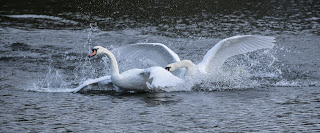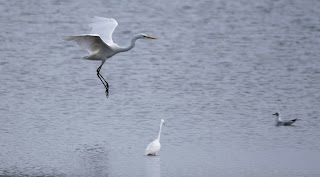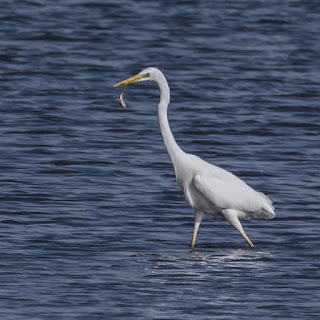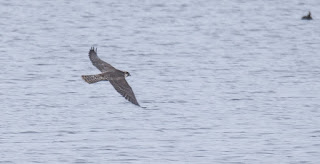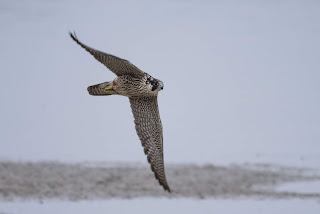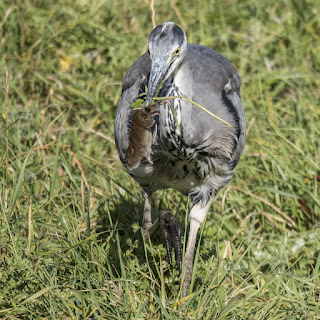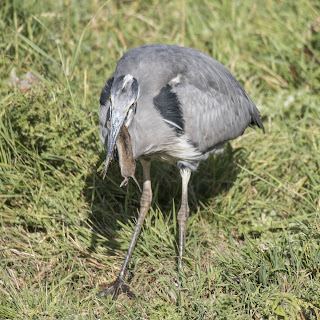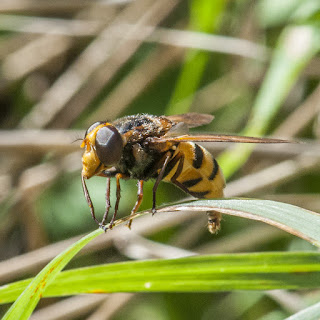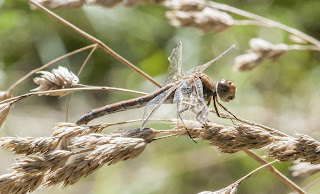One of the main reasons I had gone to Wilstone Reservoir was that a Great White Egret had been resident for a week and had been showing well in front of the hide. This was a bird I had seen in August 2002 in the Camargue, the area of wetland formed by the Rhone Delta in Southern France as this great river entered the Mediterranean Sea. However I had never seen it in the UK despite sightings becoming more and more often over the last few years probably as a consequence of global warming with the boundaries of their northern territories expanding North. I suspect that in the next few decades they will become a regular and common sight, just as the Little Egret is now, having become commonplace since my first sighting with great excitement at Easter in 1992 on the Hayle Estuary Cornwall.
Whilst I was awaiting the Peregrine, the Egrets and Herons antics provided plenty of entertainment.
Relative sizes of Little Egrets, Great White Egret and Grey Heron.
Great White Heron goes for a short flight....
....Whilst Little Egrets keep together....
....and a Grey Heron lands nearby.
An adult Grey Heron drives off a juvenile...
...whilst two Little Egrets hunt in the infill stream to the reservoir...
...and another Little Egret flies in.
The Great White Egret in hunting mode...
...later successfully catching a fish and...
....and swallowing.
Great White and Little Egrets share a hunting area.
Whilst the weather was mainly dry with some sun, this squall gave a rainbow over the reservoir and in front of Ivinghoe Beacon in the background.
Great White Heron painted in cloud with cloud fish. Hope you can see it!



